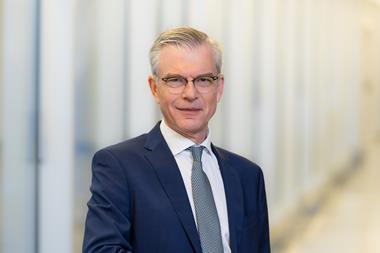Second-pillar pensions have taken firm root in the central- and eastern European (CEE) countries of Estonia and Hungary but play only a small role in Croatia and virtually none in the Czech Republic, according to a panel of CEE experts.
The panel, moderated by IPE deputy editor George Coats, included Jiri Rusnok, president of the Czech Pension Fund Association, Attila Gaál, a top Hungarian pension fund regulator, Robert Kitt, a fund manager for Hansa Liivalaia in Estonia and Dinko Novoselec, president of the Croatian fund AZ Obvezni Mirovinksi.
In Estonia, Kitt said that since the government launched a second-pillar pension in 2002, no less than 94% of the 600,000 eligible had signed up for it. "A big incentive for them was the fact that the government provides a de-facto subsidy," he said. He put the volume from new system at €500m so far.
Kitt also said that unlike in other countries, Estonian pension funds insured the workers directly, without the involvement of employers. When the second-pillar pension on January 1, 2002, banks were expected to create most of Estonia's pension funds.
In Hungary, Gaál said that since second-pillar pensions were made mandatory for new workers and voluntary for standing ones in 1998, 2.5m workers had been insured. He put the total volume from the system at €8bn. "I think you can say it's been a huge success," he told delegates at the awards.
In Croatia, meanwhile, Novoselec noted that while the government had laid the necessary groundwork for a second-pillar pension industry, the take-up was still disappointing. "We only have 25% of eligible workers with a corporate pension despite the reforms," he said.
Novoselec added that while in the past five years, investment conditions had been ideal for Croatian pension funds to win new business, "I'm not sure if we will have the same strong wind at our backs in the next five years".
"Another problem is that if a worker who is not used to investing sees that his pension fund lost €50 on a given day, he may panic and think he will lose all of his savings. Our challenge is to convince him that this is not the case," he said.
Finally, Jiri Rusnok noted that in the Czech Republic, the government had done very little to create a corporate pension industry. "After the end of Communism, the economy and the labour market were buoyant. As a result, there was little pressure on the politicians in 1990s to promote the second pillar as everyone assumed that the first pillar would be fine," he said. He added that since, there have been major first-pillar reforms.
Another big challenge for CEE pension funds, according to Novoselec, is getting their regulators to fully understand the diverse and complex investment world. "Consider that since 2003, we are legally permitted to use derivatives. The trouble is that in practice, we can't touch them, as the Croatian regulator lacks the specialised knowledge to oversee our investments in them," he said.
But Gaál replied that regulation in the CEE was improving and becoming more pragmatic. "We in Hungary are moving toward demanding a prudent man rule approach from pension funds instead of having them meet quantitative targets," Gaál said.












No comments yet